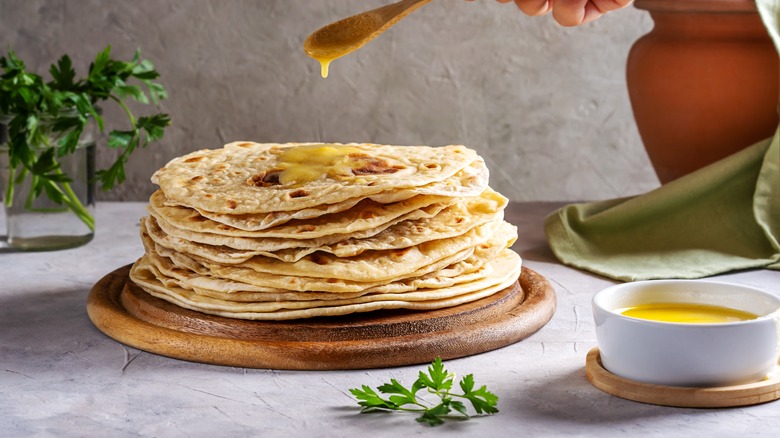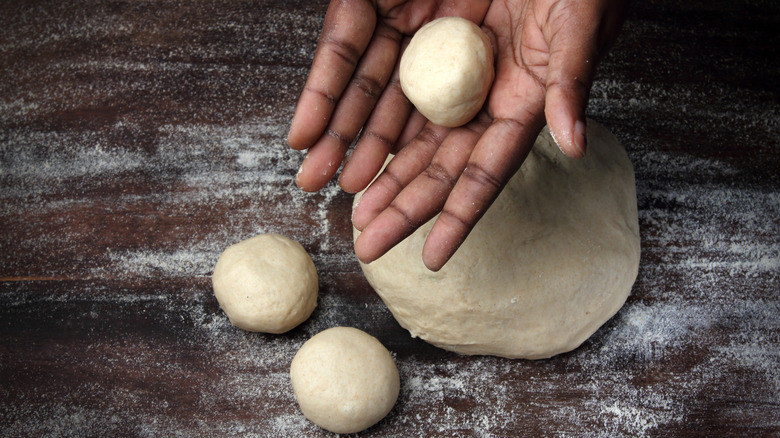The Key Dough Technique For Super Soft Roti
Roti is one of the most simple and ancient flatbreads in existence. (Its name comes from the Sanskrit word for bread, so there's no getting more archetypal!) There are many versions, but at its most basic, roti is made with two ingredients: flour and water. Roti seems easy enough to make at home and hard to mess up — until you compare your version with the unbelievably thin, soft versions served in good Indian restaurants. What's their secret for making soft roti? Letting the dough rest to relax the gluten. With a few tricks up your sleeve, you can give even this simplest of breads its highest expression.
The goal here is to make a soft, pliable dough. This involves two things we all need: proper hydration and rest. When adding water to your atta flour, you want to hit that sweet spot between properly hydrated and sticky, and it's best to use warm water to speed the relaxation of the gluten. Use a punching and folding method and knead until the dough is smooth and no longer sticky. When kneaded for around five minutes, your dough will be lovely and supple. As with yeasted bread, you can tell the dough is ready if you press lightly with your finger and it leaves an impression. After that, let the dough rest for at least 15 minutes; 30 is even better. Once rested, knead again briefly. Then form it into rounds to be rolled out and placed on a hot griddle.
Tips for making and storing soft roti
Keep the dough covered with a damp cloth or plastic wrap as you work, to prevent it drying out. Break the roti into smooth round balls. Lightly flour your surface and flatten gently using a rolling pin so you don't tear the dough. Be sure that the skillet is hot enough before you start cooking so that they cook in just a couple of minutes. The longer you cook them the more steam escapes and the drier they become. You can add a thin coating of oil or ghee once the rotis are cooked. Store the rotis in a pile, and be sure to cover them with a clean damp towel.
There are many versions of roti, but for the most part, they require the same techniques to cook. The North Indian version, called chapati, is made from whole wheat flour (with optional salt and oil). This resting technique won't work for other traditional but non-gluten doughs made from corn flour, rice flour, or chickpea flour, but you can still be sure to hydrate, knead, and cook properly to ensure soft bread. Perhaps the softest version of roti appears in Trinidadian cooking as buss up shut, so-named because the torn bread resembles a tattered shirt. This dough is made with layers of butter or oil in a kind of laminating process, then allowed to rest for up to four hours. When it's almost finished cooking, the flatbread is torn to pieces with two spatulas and served with Curry.

